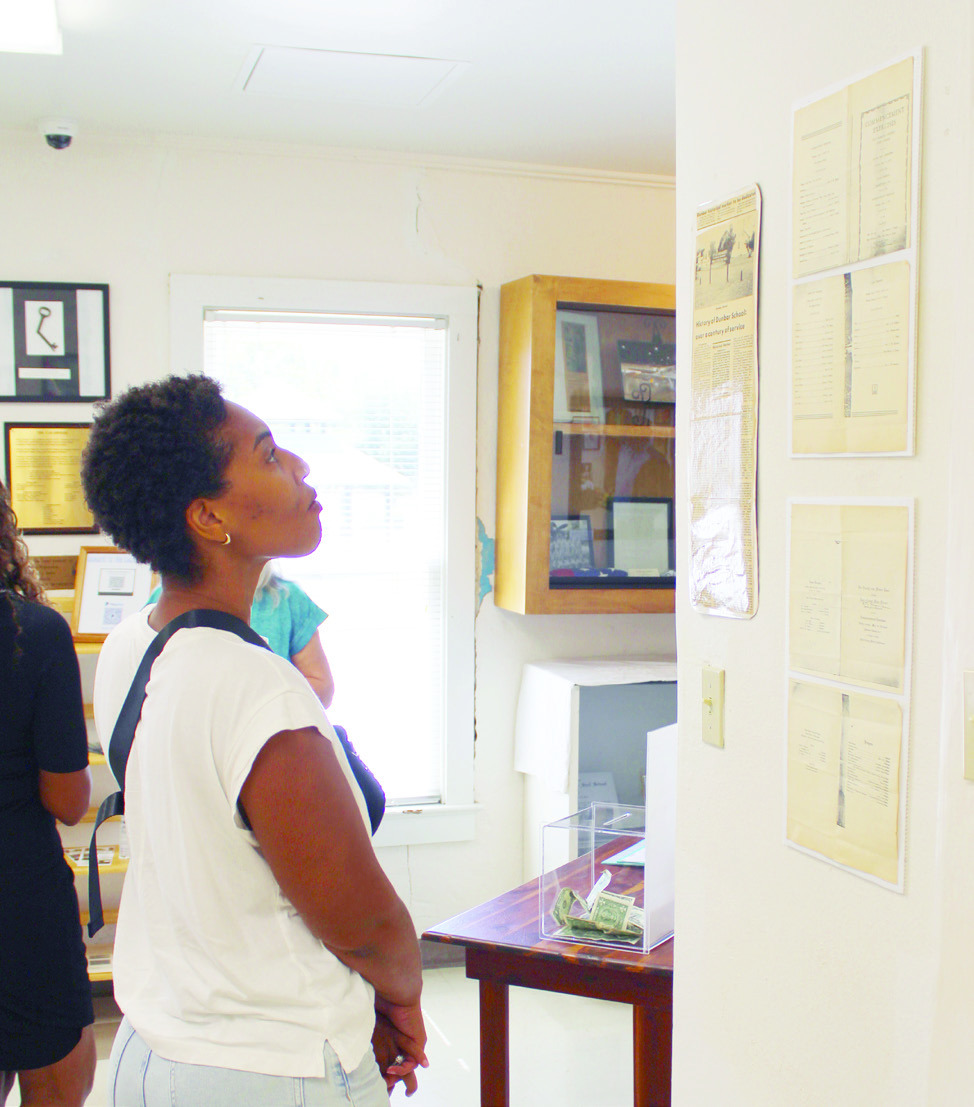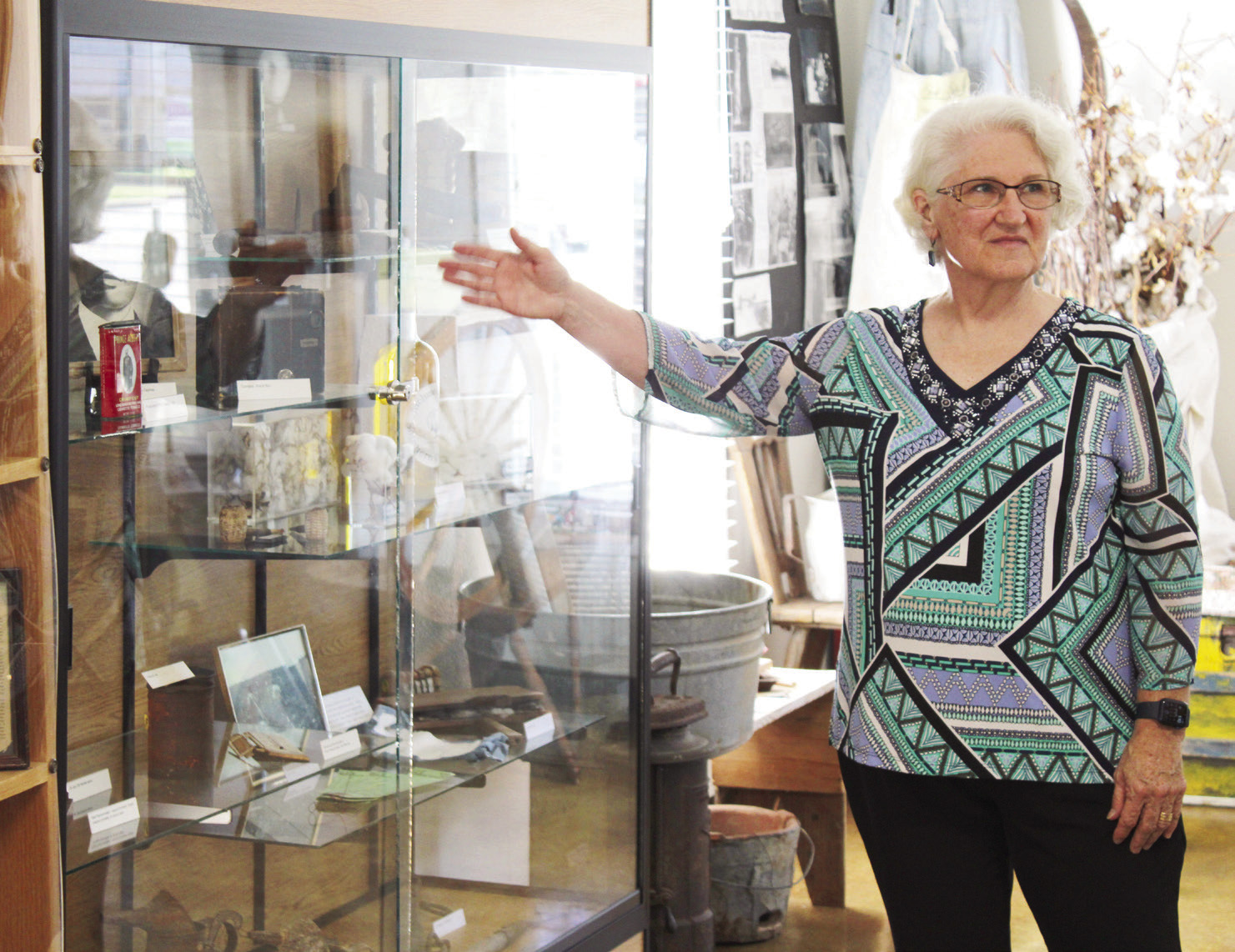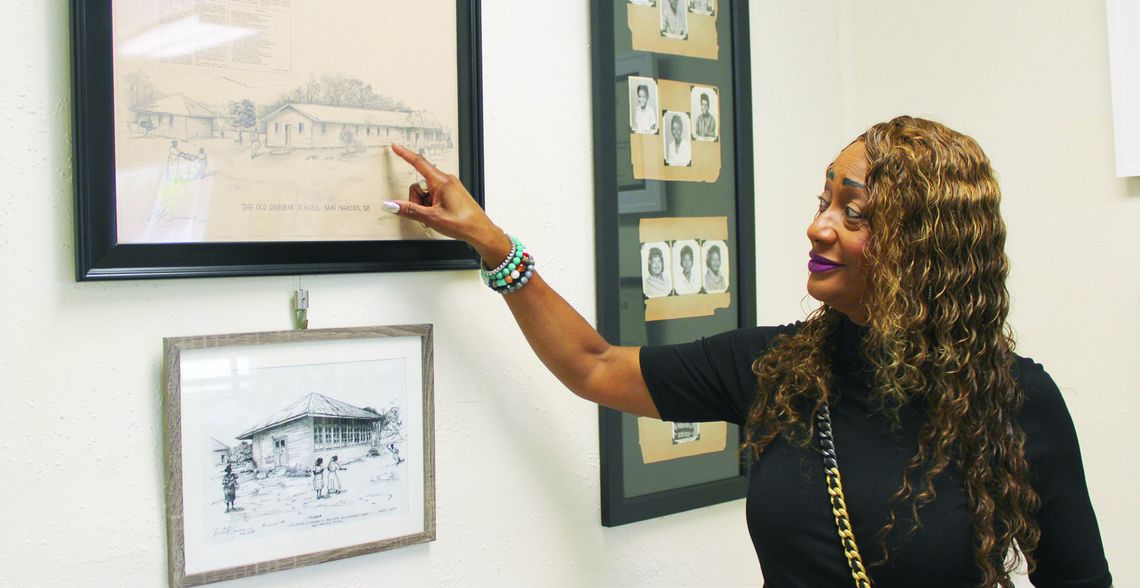LOCAL STORIES
Calaboose Museum honors the rich history of the Dunbar neighborhood
The Calaboose African American History Museum “through preservation, events and education… strives to preserve and honor the legacy of the African American experience in Hays County,” according to the website. The oldest part of the building was built in 1873 and was the location of the first jail in San Marcos that housed Black inmates. The museum is nestled on Martin Luther King Drive near the edge of the Dunbar Historic neighborhood.
Ginger Salone, Calaboose treasurer, said the word Calaboose used to be the common vernacular used for a jail, and it is derived from the Spanish word calabozo, which means dungeon.


“This was the jail, this little brick piece here, and you can see in this little picture over here. This is this window that's in the picture, and you can see where the cells were on the floor there,” Salone said, pointing at the corner of the original structure. “Here's an article from Nov. of 1943, and they decided what they would do was renovate this building. And that's when that large room in there was added on because this became the USO for the African American soldiers that were stationed out there [at Gary Job Corps]. Because it's the 40s, everything is completely segregated, so they couldn't go to the white USO. They had to go to the USO for the black soldiers.”
The Calaboose sits close to the northern edge of the Dunbar neighborhood, which is historically significant for several reasons.
“This was the red line district. That is what we call the Dunbar neighborhood,” Salone said. “I don't know if the lines are exactly the same, but this was the red line district because it was illegal for African Americans to buy property outside of these lines.”
Michele Burleson, Calaboose vice president, noted that slightly further north of the museum, on Guadalupe Street, was a thriving spot for Blackowned businesses called the Beat.
“this was, like a city within a city, right? Schools and grocery stores, churches and churches and churches — lots of churches, [as well as] a lot of barber shops and beauty shops. Everything any small town needed, it was right here,” Salone added. “In the 60s when they stopped doing the red lining… Even in the 50s, with Brown versus Board of Education, things started shifting, and people were able to move away to buy property in different locations. Now the Dunbar neighborhood, honestly, has very few black residents. The whole city of San Marcos has less than 5% of an African American population.”
After this shift, the Calaboose became a civic center for the Dunbar neighborhood where people gathered for different events.
“That's why this building was so important. Just like some of the school buildings, it's all we have,” Burleson said. “Most people have other places you can go to have parties. This was it.”
Salone said, at one point, the building fell into disrepair and wasn’t being used.
“1997 is when a local — I would call her a historian and an activist — Johnnie Armstead, got other people in the community and an architect and approached the city council and said, ‘Why don't you maintain this facility for us, and we will have an African American Museum here,’” Salone said. “And that's what it's been since 1997.”
There was an education exhibit in the Calaboose that featured a photograph of the Home Economics building from what was called the colored school that recently received a historic designation. Burleson said the colored school was lacking many basic amenities.
“They didn't have indoor bathrooms. They didn't have anywhere to have lunch or anything,” Burleson said. “Most of them lived in the neighborhood, so what would happen is they would all come home for lunch. So you would use the bathroom then you go back to school.”
There are many native San Marcan’s whose stories are told in the museum, including jazz musician Eddie Durham.
“Eddie Durham was born here in San Marcos and grew up here,” Salone said. “His older brother was a very talented musician and taught all the siblings to play. His mother was a Mohawk [Native American]. His daughter will be here for the Eddie Durham jazz fest, and she tells wonderful stories about him.”
There is also an exhibit featuring Ulysses Cephus, who was a very important blacksmith in the community. His house, which now has a historical designation, is located across the street from the museum and can be viewed as part of the tour.
“He was born in the late 1800s, so he was he was born free,” Salone said. “Back then there wasn’t plastic and artificial materials. There was wood and cloth. If you needed a tool or something, you had to go to the blacksmith. If you had a horse — which if you didn't, you didn't get around very well — you had to go to a blacksmith to have it shod. He was well respected by both black and white communities.”
Lucius Jackson was also featured at the museum. Jackson was a San Marcos native and a talented basketball player.
“When he hit high school, San Marcos was integrating,” Salone said. “Then the other teams in Texas, the coaches said, ‘We will not play you if you have a black player on your team. So he moved to Bastrop, Louisiana and had great success at the state level there. He went to Pan American University in south Texas, and went to college there. He went to the Olympics in 1964, and then he went on to play pro ball.”
To learn more about San Marcos’ African American history, visit the museum on Wednesday to Saturday from 10 a.m. to 2 p.m.








